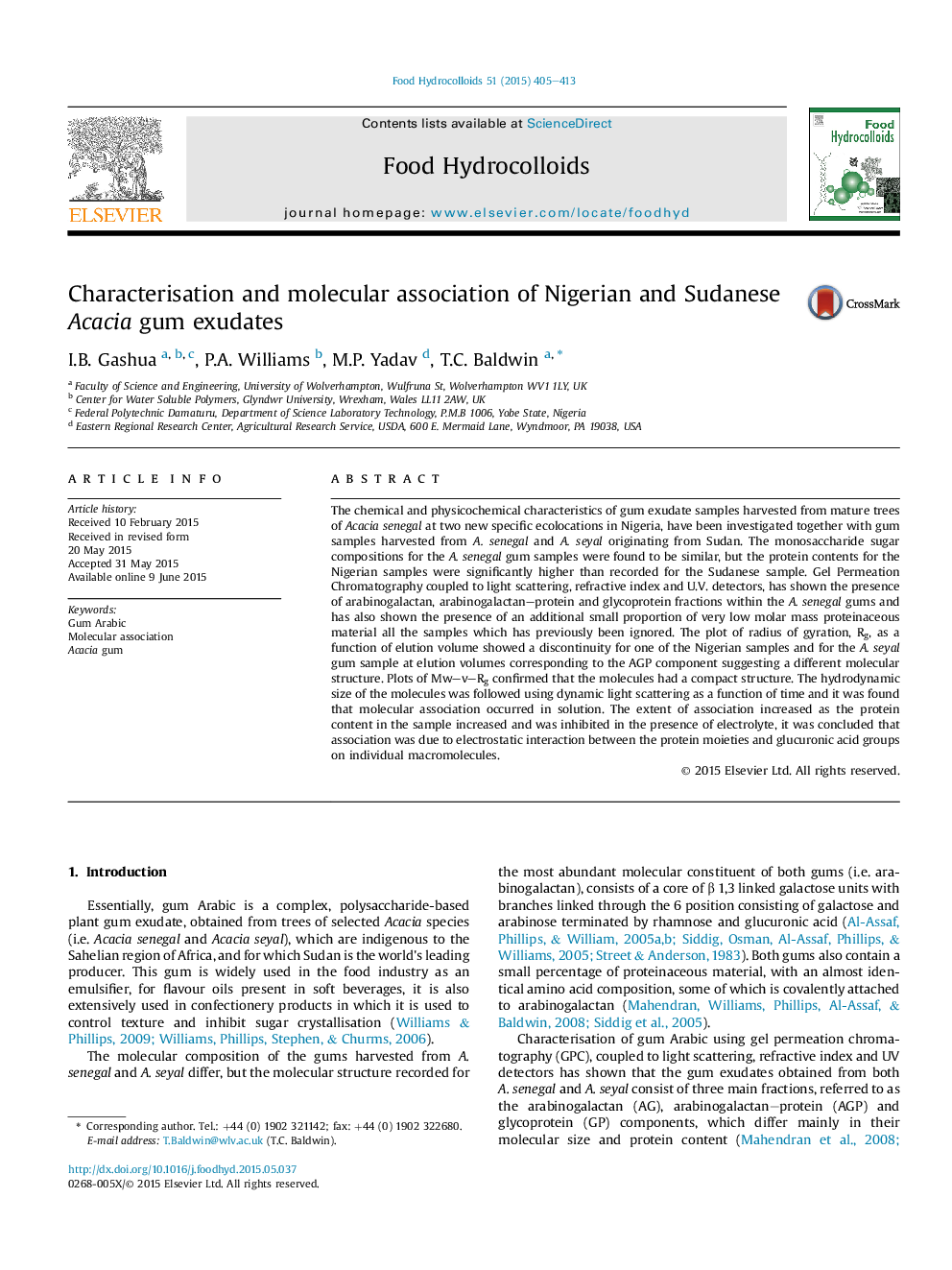| کد مقاله | کد نشریه | سال انتشار | مقاله انگلیسی | نسخه تمام متن |
|---|---|---|---|---|
| 604157 | 1454425 | 2015 | 9 صفحه PDF | دانلود رایگان |
• Two Nigerian gum Arabic samples from known eco-locations have been characterized.
• GPC has shown they contain AG, AGP and GP fractions.
• GPC/MALLS confirms a compact molecular structure.
• DLS has shown molecules present in the gums associate in solution.
• Association is attributed to electrostatic interaction.
The chemical and physicochemical characteristics of gum exudate samples harvested from mature trees of Acacia senegal at two new specific ecolocations in Nigeria, have been investigated together with gum samples harvested from A. senegal and A. seyal originating from Sudan. The monosaccharide sugar compositions for the A. senegal gum samples were found to be similar, but the protein contents for the Nigerian samples were significantly higher than recorded for the Sudanese sample. Gel Permeation Chromatography coupled to light scattering, refractive index and U.V. detectors, has shown the presence of arabinogalactan, arabinogalactan–protein and glycoprotein fractions within the A. senegal gums and has also shown the presence of an additional small proportion of very low molar mass proteinaceous material all the samples which has previously been ignored. The plot of radius of gyration, Rg, as a function of elution volume showed a discontinuity for one of the Nigerian samples and for the A. seyal gum sample at elution volumes corresponding to the AGP component suggesting a different molecular structure. Plots of Mw–v–Rg confirmed that the molecules had a compact structure. The hydrodynamic size of the molecules was followed using dynamic light scattering as a function of time and it was found that molecular association occurred in solution. The extent of association increased as the protein content in the sample increased and was inhibited in the presence of electrolyte, it was concluded that association was due to electrostatic interaction between the protein moieties and glucuronic acid groups on individual macromolecules.
Figure optionsDownload as PowerPoint slide
Journal: Food Hydrocolloids - Volume 51, October 2015, Pages 405–413
